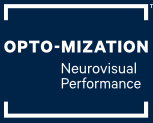Why does one glasses prescription stop your headaches and migraines, while the other just lets you see clearly?
Have you seen someone cry when they put on their glasses because the world no longer moves? Or met a person whose glasses allowed them to get back to work and earn a living again? Welcome to ErgopticsTM , prescribing glasses for efficiency. I’m fortunate enough to see this every day at work. Several times per week someone in my office is in tears, and so am I. It makes me happy to see improvements, but it also makes me realize how many people don’t know that there is a solution to their problems.
If you suffer from dizziness, nausea, headaches, migraines, fatigue, difficulty with screens or post concussion syndrome and want to know if it’s visual, look at this screening test here: If this provokes any symptoms, your vision (function not clarity) is a significant part of the problem.
What most glasses are intended to do:
- Allow clear vision
What your glasses could be doing:
- Clear vision
- Reduce headaches
- Reduce migraines
- Reduce dizziness
- Reduce fatigue
- Improve balance
Most of the time, a glasses prescription is just the measurement that lets you see clearly, known as refractive error.
What’s overlooked is that there are ways to prescribe your glasses to improve how your eyes track, work together, and how your visual and vestibular (inner ear) integrate. This can mean improved reading, reduced headaches/migraines, reduced dizziness and nausea improved attention, and even improved balance.
In order to achieve this, we use tools like prism, bi-nasal or nasal occlusion, filters like Fl-41 and more. The important part is to use the lens to help improve function, not just clarity.
The basic premise is this. If how your brain is using your eyes, and processing the information is not accurate or efficient, the lenses can be used to manipulate the incoming information, so that it creates better outcomes. Then we often use vision therapy (Opto-mization training) to improve your brain’s visual processing, integration, and visual skills.
